Trekking the challenging yet awe-inspiring trails to the Everest Base Camp is not just a journey through the towering peaks and deep valleys of the Himalayas; it's also a culinary adventure that offers trekkers a taste of the region's rich and diverse food culture. Nestled amidst the world's highest mountains, the teahouses and lodges along the trekking route serve as vital pit stops, providing not just shelter but also nourishing meals essential for the arduous journey ahead. These eateries offer a blend of traditional Nepalese and Tibetan dishes, coupled with familiar global favorites, ensuring trekkers receive both the comfort of home flavors and the thrill of new culinary experiences. As you lace up your boots and prepare for this once-in-a-lifetime trek, let's delve into the flavors and dishes that will accompany you on your journey to the roof of the world.
Breakfast Items
- Toast: A common breakfast item, usually served with butter and a variety of jams. Toast provides a good base of carbohydrates to start the day.
- Eggs: Eggs are a great source of protein, essential for muscle repair and recovery. They can be cooked according to your preference, such as boiled, scrambled, or made into an omelet.
- Pancakes: Often served plain or with toppings like honey, jam, or lemon. Pancakes are an energy-dense food, providing you with the sustained energy needed for trekking.
- Porridge: Typically made from oats or cornmeal, porridge is a warm and filling meal, often sweetened with sugar and sometimes served with fruits. It's rich in fiber and slow-release carbohydrates.
-
[block](2, 14, 23, 109)
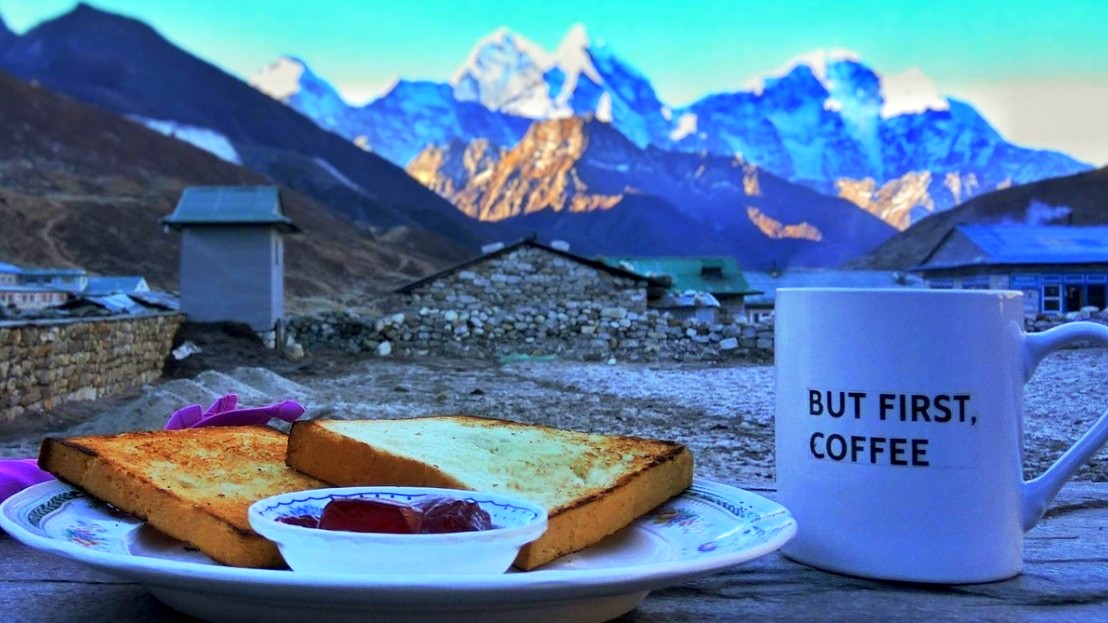
- Tsampa: A traditional Tibetan food made from roasted barley flour, often mixed with tea and butter. Tsampa is easy to digest and provides quick energy.
- Tea: Tea is a staple beverage in Nepal, often consumed several times a day. Traditional Nepali tea is milky and sweet, but you can usually also find black, green, and herbal tea varieties.
- Coffee: Not as common as tea in Nepal, but most teahouses will offer it. It's usually instant coffee, but it can provide a much-needed caffeine boost in the morning.
- Hot Chocolate: A comforting hot beverage option, especially enjoyable during colder mornings or for those who don't prefer tea or coffee.
Breakfast on the trek is about more than just filling your stomach. It's about fueling your body with the right nutrients for the demanding day ahead. So having a good breakfast helps you on the journey.
Lunch/Dinner
- Dal Bhat: This staple Nepalese meal includes lentil soup (dal), rice (Bhat), vegetable curry, and pickles. It provides a balanced intake of protein, carbohydrates, and nutrients, and is usually served with free refills in teahouses.
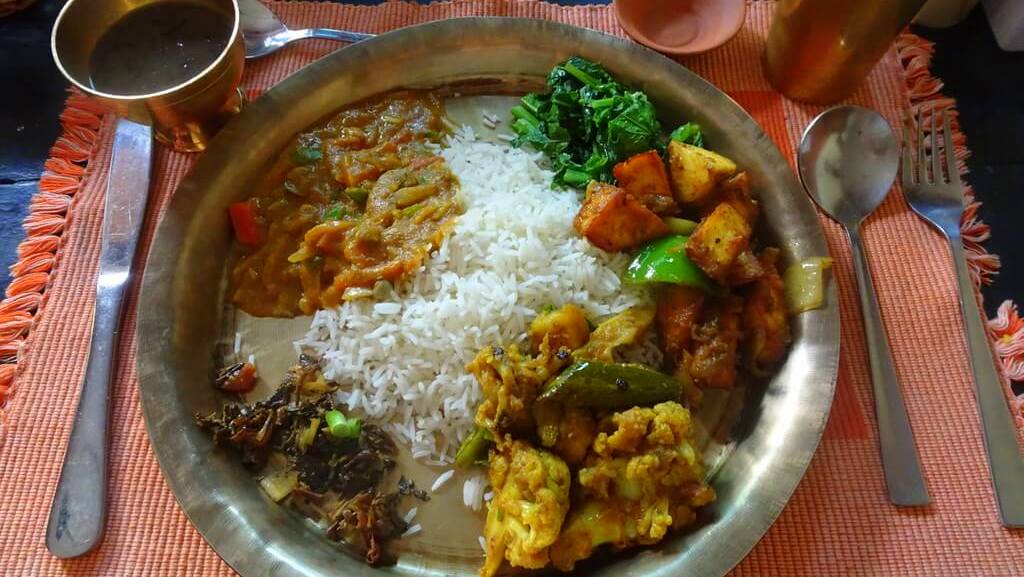
- Chowmein: This is a stir-fried noodle dish with mixed vegetables and sometimes chicken or egg. It offers a blend of carbohydrates and proteins and is a flavorful choice.
- Thukpa: A hot noodle soup of Tibetan origin, Thukpa typically contains vegetables and meat (often chicken or yak). It's comforting, and warm, and can help with hydration at high altitudes.
- Momos: These are Tibetan-style dumplings, filled with either vegetables or meat and served with a dipping sauce. Momos are a good source of protein and carbohydrates, and also a local favorite.
- Pasta: Pasta dishes vary, but are generally served with a simple tomato or cheese sauce. Pasta is a great source of carbohydrates, needed for sustained energy during trekking.
- Pizza: The pizza served on the trail will be a simple variant, usually with a thin crust and basic toppings like cheese, tomato, and perhaps some vegetables or canned tuna.
- Sandwiches: These could contain a variety of fillings like cheese, canned tuna, tomatoes, or cucumbers. Sandwiches are a quick and convenient meal option providing a balance of carbohydrates (from the bread) and protein (from the fillings).
- International Dishes: Some teahouses may serve familiar international dishes like spaghetti or mac & cheese. These are usually more readily available at lower altitudes and provide a comforting taste of home.
Although these meals are basic, they are designed to provide the energy and nutrients necessary for the physical demands of trekking at high altitudes. The meals are part of the adventure, and trying local dishes is an integral part of the cultural experience.
Snacks
- Granola Bars: High in carbohydrates and often fortified with additional nutrients, granola bars are a lightweight and convenient source of energy on the go.
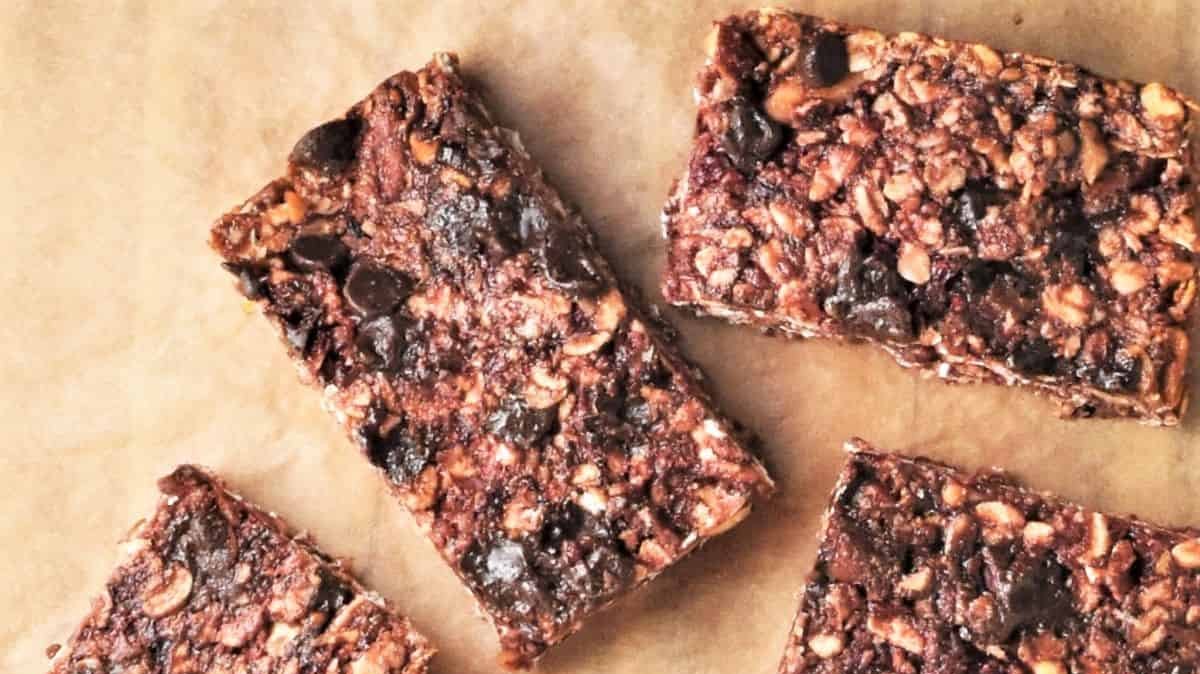
- Dried Fruit: Dried fruits like apricots, raisins, or mangoes are a great source of natural sugars for quick energy and also provide essential nutrients.
- Nuts: Nuts such as almonds, cashews, or walnuts are rich in healthy fats and protein. They're energy-dense, helping to keep you full and fueled throughout your trek.
- Chocolate: Dark chocolate is a high-energy food that can provide a quick boost when you're feeling tired. Plus, it can serve as a comforting treat in the cold mountain climate.
- Energy Gels: These are specially formulated for endurance activities and can give you a quick and easily digestible boost of carbohydrates.
- Cheese: High in protein and fat, cheese is a good source of sustained energy. Opt for hard cheeses as they travel better.
- Crackers: Lightweight and less perishable than bread, crackers can be a good source of carbohydrates. They pair well with cheese or peanut butter.
- Peanut Butter: A good source of protein and healthy fats, peanut butter can be spread on crackers or eaten straight from the jar for a high-energy snack.
While there are food options available along the trail, having your own supply of snacks ensures you have something to eat that you know you like and that agrees with your stomach. Plus, your favorite snacks can serve as a great morale booster during challenging portions of the trek.
Drinks
- Bottled Water: You can buy bottled water at tea houses and shops along the trail. However, keep in mind that as you ascend, the price increases due to transportation costs.
- Purified Tap Water: Tap water isn't safe to drink directly, but can be made safe through purification methods such as boiling, using iodine tablets, chlorine drops, or a portable water filter like LifeStraw. This is a more environmentally friendly alternative to buying bottled water.
- Tea: A staple beverage in Nepal, tea is typically served with milk and sugar (chai) but can also be served plain. Green, black, and herbal tea varieties are usually available.
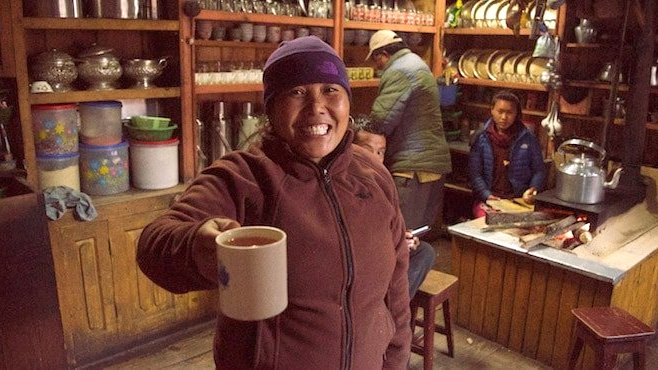
- Coffee: Usually served as instant coffee, it's available in most teahouses. A good choice for a caffeine boost, but remember to also stay hydrated with water as coffee can be dehydrating.
- Hot Chocolate: Available at most teahouses, hot chocolate can be a comforting, warming drink during colder days or evenings.
- Hot Lemon: A hot drink made with lemon and sugar, it's a soothing choice, particularly if you have a cold or sore throat.
- Alcohol: Although local beers and spirits may be available in some teahouses, it's generally advised to avoid alcohol during the trek. Alcohol can increase your risk of dehydration and altitude sickness.
It is very important to stay hydrated during your trek. Drinking plenty of water helps with acclimatization and can prevent altitude sickness. Always ensure your water is purified if not bottled, and balance your intake of caffeinated or sweetened beverages with plenty of plain water.
Altitude Considerations when it comes to eating during the Everest Base Camp Trek
- Decreased Appetite: At higher altitudes, you may notice a decrease in your appetite. Despite this, it's crucial to continue eating regular, nutrient-dense meals to maintain your energy levels for the physically demanding trek.
- Digestion: Your digestive system may be less efficient at higher altitudes due to the reduced oxygen levels. Therefore, it can be helpful to eat smaller, more frequent meals rather than a few large ones.
- Hydration: Dehydration can exacerbate symptoms of altitude sickness. Regularly drink water and balance it with the consumption of electrolyte-rich drinks or foods to maintain hydration and mineral balance.
- Carbohydrates: Your body tends to utilize more carbohydrates at high altitudes. Foods high in carbohydrates, such as pasta, bread, and rice, should form a substantial part of your diet.
- Protein: Include adequate protein in your diet to support muscle repair and recovery. However, excessively high protein foods can be harder to digest at altitude.
- Avoid Alcohol and Caffeine: Both can accelerate dehydration and make it more difficult for your body to acclimatize. Stick to water, herbal teas, or soups instead.
- Go Slow: Ascend gradually to give your body time to adjust to the changing altitude. This can also help mitigate any loss of appetite or digestive issues associated with altitude.
Everyone reacts differently to altitude, so it's important to listen to your body, stay hydrated, eat well, and ascend at a pace that allows your body to acclimatize.
Cost of Food on the Everest Base Camp Trek
Trekking to the Everest Base Camp (EBC) is a once-in-a-lifetime experience for many, but it's essential to budget properly to ensure a smooth journey. The cost of food, along with other expenses, can significantly affect your overall budget. As you ascend higher, prices generally increase due to the remote nature of the area and the costs associated with transporting goods.
Here's a breakdown of the typical costs of food on the Everest Base Camp trek:
Tea/Coffee
- Cost: NPR 50-150 (lower elevations) to NPR 200-400 (higher elevations)
- Note: As you gain altitude, the price of a simple cup of tea or coffee can double or even triple.
Breakfast
- Dal Bhat: NPR 500-800 (lower) to NPR 800-1200 (higher)
- Porridge or Oats: NPR 300-500 (lower) to NPR 500-700 (higher)
- Pancakes/Toast: NPR 300-500 (lower) to NPR 500-700 (higher)
Lunch/Dinner
- Dal Bhat: NPR 500-800 (lower) to NPR 800-1200 (higher)
- Noodles (Chowmein/Thukpa): NPR 400-600 (lower) to NPR 700-900 (higher)
- Momos: NPR 400-600 (lower) to NPR 600-800 (higher)
- Pizza or Pasta: NPR 500-700 (lower) to NPR 800-1000 (higher)
Snacks
- Chocolates/Granola Bars: NPR 150-300 per piece
- Biscuits: NPR 100-250 per pack
- Dried Fruits/Nuts: NPR 200-500 per small pack
Drinks
- Bottled Water: NPR 50-100 (lower) to NPR 300-400 (higher)
- Soft Drinks: NPR 150-250 (lower) to NPR 300-500 (higher)
- Beer: NPR 500-700 (lower) to NPR 800-1200 (higher)
Soups
- Cost: NPR 300-500 (lower elevations) to NPR 500-700 (higher elevations)
Additional Notes
- Altitude and Price: The prices mentioned are general estimates and can vary based on the specific teahouse, time of year, and other factors. As a rule of thumb, the higher the altitude, the higher the price.
- Dal Bhat Advantage: Many trekkers swear by the Dal Bhat as it often comes with free refills, providing good value for money and necessary calories.
- Drinking Water: It's often cheaper and environmentally friendly to purify local water rather than buy bottled water.
Always ensure you have enough Nepalese Rupees on hand as there are no ATMs beyond Namche Bazaar, and while some teahouses may accept other forms of payment, cash is king in the mountains. It's also a good idea to set aside a little extra for unforeseen expenses.
Vegetarian Food on the Everest Base Camp Trek
Trekking to Everest Base Camp is not just an exploration of majestic peaks and serene landscapes; it's also a culinary adventure into the heart of Himalayan cuisine. For vegetarian trekkers, the journey is both satisfying and flavorful. Traditional Nepalese meals, predominantly vegetarian by nature, dominate the menu at most teahouses en route. One can expect to savor the classic "Dal Bhat," a nutritious combination of lentil soup and rice, often accompanied by vegetable curries and pickled accompaniments.
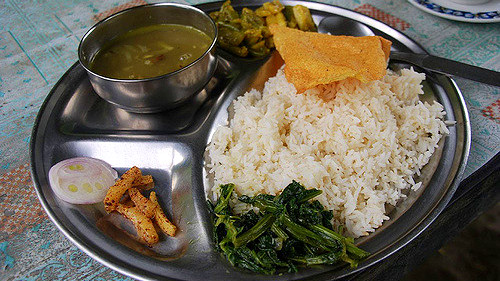
The spicy and warming vegetable "Thukpa" (noodle soup) is another favorite, providing comfort on colder trekking days. For those seeking a bite reminiscent of home, many tea houses offer dishes like vegetable pizzas or pasta, made with fresh local ingredients. And of course, no trek is complete without munching on steamed "Momos," delightful dumplings stuffed with a mix of vegetables and spices. In essence, the Everest Base Camp Trek is not only a feast for the eyes but also for the vegetarian palate.
Can I eat meat during the Everest Base Camp Trek?
Eating meat while trekking to Everest Base Camp is a topic that elicits varied opinions among trekkers and local hosts. Here are some considerations to weigh when deciding whether to consume meat during the trek:
Freshness Concerns
Transportation: Most of the meat in the region is transported from lower altitudes without refrigeration. The higher you go, the longer it's been since the meat was fresh.
No Local Slaughter: To respect the sentiments of the Buddhist population in the area, animals are not killed for meat in the Everest region. This again emphasizes the concern regarding how the meat is transported and stored.
Digestive Considerations
Harder Digestion: Meat, especially red meat, can be harder to digest. Given the physical exertion of trekking and the challenges of altitude, it's advisable to consume foods that are easily digestible.
Altitude Effects: At higher altitudes, the body's digestive efficiency can decrease, and there's already a risk of stomach issues due to changes in water, food, and the environment.
Ethical and Environmental Considerations
Cultural Respect: As mentioned, the majority Buddhist population in the region considers it disrespectful to kill animals. While they tolerate the consumption of meat brought from outside, abstaining can be seen as a sign of respect.
Environmental Footprint: The transportation of meat to such remote areas has an environmental impact. The consumption of locally sourced vegetarian food can reduce that footprint.
Health Risks
Food Poisoning: There's a risk, albeit small, of food poisoning from meat that hasn't been stored or cooked properly. This can severely hamper a trekker's ability to continue and get the most out of their trek.
Alternative Protein Sources
Plenty Available: Lentils (in "Dal Bhat"), beans, chickpeas, eggs, and dairy products are abundant in the region, ensuring you can get the necessary protein even without consuming meat.
While it's ultimately a personal decision, many seasoned trekkers and guides advise against eating meat during the Everest Base Camp trek due to the aforementioned concerns. The region offers a plethora of tasty and nutritious vegetarian dishes that can fuel your journey effectively. If you do decide to consume meat, it's advisable to do so at lower altitudes where freshness is more guaranteed.
Can we cook our own meal on the EBC Trek?
Cooking your own meal during the Everest Base Camp (EBC) Trek is theoretically possible but comes with several challenges and considerations:
Teahouse Policies: Most trekkers stay in tea houses throughout the trek. These establishments generally expect you to eat their meals as a part of the lodging arrangement. In many cases, room rates are subsidized by the meals you purchase. Cooking your own food might be frowned upon or outright disallowed.
Carrying Cooking Equipment: The trek to EBC is demanding. Adding the weight of cooking equipment, such as a portable stove, fuel, pots, utensils, and ingredients, can make your backpack considerably heavier and the trek more challenging.
Fuel Availability: While you might be able to purchase some types of fuel in Kathmandu or Namche Bazaar, the further you trek, the harder it becomes to find and the more expensive it gets. It's also essential to consider the environmental impact of using non-renewable fuel sources in such pristine areas.
Food Ingredients: While some ingredients can be carried from lower altitudes or purchased in larger villages, fresh produce, and other essentials become scarcer as you ascend. This limits your cooking options unless you're prepared to carry a substantial amount of food.
Environmental Concerns: Cooking can produce waste, both organic and non-organic. Proper disposal is crucial to maintaining the region's delicate ecosystem. You'd need to pack out most of your trash.
Cultural Experience: One of the joys of the EBC trek is experiencing the local culture, which includes the food. By cooking your own meals, you might miss out on some traditional dishes and the chance to interact with locals during mealtimes.
Altitude Considerations: Cooking times can vary at higher altitudes due to decreased atmospheric pressure. This means that boiling water or cooking certain foods can take longer, consuming more fuel.
Permit and Regulation Issues: Some areas may have regulations against open fires or the use of portable stoves, especially within protected zones.
While it's technically possible to cook your meals during the EBC Trek, it's more practical and enriching to rely on the meals provided by teahouses. If you have specific dietary needs or preferences, it's a good idea to discuss these with teahouse owners or your trekking company in advance. They're often accommodating and can help ensure your meals align with your requirements.
What not to eat while trekking to Everest base camp?
When trekking to Everest Base Camp (EBC), certain dietary precautions can help ensure a safer and more enjoyable experience. While the food in tea houses along the trek is generally safe and prepared to cater to trekkers, there are some items and practices you might want to avoid:
Raw Vegetables and Salads: Due to concerns about how they're washed (or not washed), it's safer to avoid raw vegetables and salads. Uncooked foods can carry bacteria, especially if they're rinsed with untreated water.
Meat, especially as you ascend: As you go higher, the freshness of meat becomes more questionable. Most meats are carried up without refrigeration. Also, digestion becomes harder at higher altitudes, and meat can be more challenging to digest than vegetarian options.
Dairy Products from Unknown Sources: While yak cheese and butter are local products and generally safe, be cautious about other dairy products unless you're sure of their freshness and source.
Tap Water: Always drink purified or boiled water. Even if locals can drink straight from the tap or source, your stomach might not be acclimatized to the local bacteria.
Alcohol: Consuming alcohol can dehydrate your body and exacerbate symptoms of altitude sickness. It's best to avoid or limit alcohol consumption, especially as you gain altitude.
Caffeinated Drinks: In excess, caffeine can also contribute to dehydration. While it's okay to enjoy a cup of tea or coffee, don't overdo it, especially at higher altitudes.
Street Food in Starting Points: While the trek's starting points (like Lukla or the initial places in the lower region) might have more variety, be cautious about consuming street food. Hygiene standards can vary.
Sweets and Chocolates: While they can be a great source of quick energy, they shouldn't replace regular meals. Also, be aware that chocolates and some other snacks get more expensive as you ascend.
Overly Spicy or Oily Food: Your digestive system can become more sensitive at high altitudes. Overly spicy or greasy foods might not sit well in your stomach and can cause digestive discomfort.
Your body needs energy and nutrients during the trek, so it's essential to eat well. However, being discerning about your food choices can prevent potential health issues. Always prioritize safety and listen to your body. If unsure about something, consult with your guide or experienced trekkers.
Things to consider, while doing Everest Base Camp Trek?
Here are several key considerations to keep in mind during the trek:
- Altitude's Impact on Digestion: At higher altitudes, the body's ability to digest certain foods may be reduced. Therefore, it's wise to consume easily digestible foods and avoid heavy, oily, or excessively spicy dishes.
- Nutritional Value: Given the physical demands of trekking, it's crucial to ensure your meals are nutrient-rich. Traditional meals like "dal bhat" provide a balanced mix of proteins, carbohydrates, and essential vitamins.
- Hydration: High altitudes and strenuous trekking mean you'll need to drink plenty of water. However, avoid tap water and opt for bottled water, purified water, or boiled water to avoid any water-borne illnesses.
- Local Produce: The food at higher elevations is mostly organic and locally sourced. This means fewer preservatives and fresher ingredients but also a more limited variety as compared to lower altitudes.
- Cost: As you ascend, the price of food generally increases due to the logistics involved in transporting goods to such remote areas. Plan your budget accordingly.
- Cultural Preferences: While there will be a mix of Nepali and Tibetan dishes, some teahouses might offer Western dishes too. Remember, the authenticity and taste of such Western dishes might vary.
- Repetitive Menu: The variety of food can be limited, especially in higher altitudes. Expect to see many of the same dishes like dal bhat, momos, and thukpa on the menu across different teahouses.
- Food Safety: It's crucial to ensure that the food is freshly prepared and served hot. Avoid raw salads or fruits that cannot be peeled as they might be washed with untreated water.
- Special Dietary Needs: If you have any allergies or specific dietary restrictions, it's essential to communicate them to the teahouse owners. However, be aware that they might not be as familiar with some specialized diets.
- Availability of Snacks: While tea houses will serve meals, it might be a good idea to carry some personal snacks like energy bars, nuts, or dried fruits for a quick energy boost on the trail.
By keeping these considerations in mind, trekkers can ensure they have a nourishing and enjoyable culinary experience on their Everest Base Camp Trek.
Foods on the Luxury Everest Base Camp Trek
The "luxury" Everest Base Camp (EBC) trek typically means that trekkers will be staying in higher-end lodges or teahouses, often referred to as luxury lodges. These establishments provide amenities that are superior to the regular teahouses, including more varied and upscale dining options. Here's a look at the type of food offerings you can expect on a luxury EBC trek:
Extended Breakfast Options: Apart from the regular toast, eggs, and porridge, luxury lodges might offer a more extensive range, including items like French toast, muesli with fresh fruits, croissants, and more.
Gourmet Local Dishes: Expect a gourmet version of local dishes. The "dal bhat," a Nepalese staple, will often be presented more elegantly, with varied accompaniments and using high-quality ingredients.
International Cuisines: These lodges cater to an international clientele and thus offer dishes from around the world. You can expect Italian pasta, American-style burgers, Chinese stir-fries, and sometimes even delicacies like steaks or specialty salads.
Freshly Baked Goods: Many luxury lodges have their own bakeries, offering a daily selection of fresh bread, pastries, and cakes.

Beverage Options: Apart from the standard tea and coffee, you might find a range of herbal teas, quality coffee brews, hot chocolates, and even a selection of wines or international liquors in some lodges.
Desert Selection: Instead of just the regular rice pudding, expect a menu with items like chocolate brownies, apple pie, or even cheesecake.
Meat and Fish: In luxury lodges, the standards for non-vegetarian items are generally higher. You might find dishes made from freshly sourced chicken, yak meat, or trout, especially in the lower altitudes.
Special Dietary Needs: Luxury lodges are more likely to cater to special dietary requirements, whether you're vegetarian, vegan, gluten-free, or have other preferences or restrictions.
Health and Hygiene: The preparation and hygiene standards are usually top-notch in luxury lodges, ensuring that the food is not just tasty but also safe.
A luxury EBC trek offers a gastronomic experience that combines the essence of local flavors with international favorites. It's a journey where the culinary delights might just compete with the majestic views for your attention! Always keep in mind, however, the effects of altitude can impact digestion, so even with a plethora of options, it's essential to listen to your body.
Here you can find some of the best Everest Region Trekking Packages
Everest Heli Trek with Kalapathher Landing
Gokyo Lakes and Everest Base Camp Trek
Everest Base Camp Heli Trek - 9 Days
VVIP Everest Base Camp Luxury Trek
Everest Base Camp and Gokyo Lakes Luxury Helicopter Trek
Luxury Everest Base Camp Trek - 14 Days
If you need any further information, please contact us by email: at [email protected], Phone: at +977- 985 100 5129 (WhatsApp)




